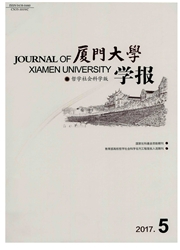

 中文摘要:
中文摘要:
近年来,有关贸易与气候变化问题越来越受到国际社会的关注,利用GTAP-E模型对贸易自由化背景下不同减排方案的宏观经济和碳排放影响进行预测模拟。结果表明,"附件Ⅰ减排"和"全球合作性减排"的总量管制模式是以牺牲经济增长和消费者福利为代价的,而作为灵活机制的"全球碳排放交易",对全球总量减排效果最为明显,同时对全球经济损失和消费者福利影响的程度相对较小。对中国而言,较之其他减排方案,"全球碳排放交易"将促使附件Ⅰ国家将减排压力、资源配置损失向中国转移,导致中国碳排放量增加的同时贸易条件恶化、经济总量明显下降。在贸易自由化背景下,参与"全球合作性减排"对中国的低碳经济转型更为有利。
 英文摘要:
英文摘要:
This paper takes advantage of the GTAP-E model to forecast the c and carbon emissions of different emission reduction policies in the context of trade liberalization. It is found that the "Annex I Emissions Reduction" policy and the "Global Cooperative Emissions Reduction" policy have proved that the total amount of emission is reduced at the expense of economic growth and consumer welfare. As one of the most flexible mechanisms for carbon emission reduction, the "Global Carbon Emissions Trading" policy has the most obvious effect on global emission reduction but the smallest global economic losses and extent of the deterioration of consumer welfare. For China, compared with other policies, the "Global Carbon Emissions Trading" policy will lead Annex 1 countries to pass on the emission constraint and resource allocation loss to China, resulting in more carbon emissions, greater economic loss and worse TOT in China. In the midst of global trade liberalization, the better choice for the development of China's low-carbon economy is to participate in the "Global Cooperative Emissions Reduction" policy.
 同期刊论文项目
同期刊论文项目
 同项目期刊论文
同项目期刊论文
 期刊信息
期刊信息
